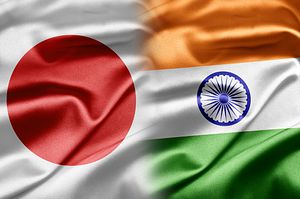As Clint notes over at the Tokyo Report, the India-Japan bilateral summit that took place over the past week was characteristically rife with statements and lofty rhetoric about friendship but little progress was made on several pending bilateral issues. India and Japan didn’t finalize the terms of the pending ShinMaywa US-2 amphibious aircraft deal. They didn’t come to an agreement on the long-standing issue of civil nuclear cooperation between the two countries — something India deeply wants. Similarly, Tokyo didn’t manage to draw a road map for the possible transfer of Japanese Shinkansen bullet train technology to India. Finally, they held back from formalizing annual high-level strategic consultations via a “two plus two” dialogue involving the foreign and defense ministers of both countries — something Tokyo wanted but New Delhi wasn’t quite ready for. Meanwhile, as the September 1 “Tokyo Declaration” demonstrates, the scope and ambition of India-Japan relations remains as large as ever.
For Modi, this trip to Tokyo is a signal to both his critics and supporters that he is setting out to do what he said he would during his campaign for prime minister: lead India’s foreign policy with its economic interests in mind. The announcement that Japan will commit to investing $34 billion in India’s private and public sectors represents a significant coup for the Modi government. Essentially, Modi’s mission in Tokyo over the last few days was to export the brand of diplomacy he grew so familiar with as the chief minister of Gujarat. In Tokyo, Modi declared, “Just as India is focusing on [a] Look East policy, we expect a Look at India policy from Japan.” Additionally, in an effort to advertise India’s value as a choice destination for Japanese investment, Modi assured Japanese investors that “there is no red tape but red carpet in India. We have eased off lot[s] of regulations.” The investment pitch to Japanese investors wasn’t empty rhetoric. Modi announced that his government would set up a special team to accelerate bureaucratic clearances and paperwork for Japanese investors.
While the $34 billion investment deal — which will finance infrastructure and other projects in India — received the most attention, Modi and Abe signaled their intention to accelerate talks on other issues. The two men also made much of their positive personal rapport — something that was on display via social media leading up to this summit. Apart from the investment deal, little progress was made on other bilateral issues. As Clint rightly notes, both sides were content to “push forward” or “accelerate” talks on the nuclear issue, amphibious aircraft, and Shinkansen deals.
For Modi, the visit hit just the right notes. He’ll return to India with $34 billion of Japanese investment in tow. He managed to avoid directly upsetting Beijing by formalizing the “two plus two” mechanism with Tokyo ahead of Xi Jinping’s upcoming visit to New Delhi. Still, with a nod to Beijing’s assertive regional policy, Modi called for India and Japan to operate as examples of “development, or vikaswaad,” not “expansionism or vistarwaad.” Strategic and normative issues weren’t entirely sidelined in the name of fostering closer economic ties. Meanwhile, the issues that weren’t resolved at this summit will likely fall into the portfolios of India and Japan’s top diplomats and may end up being signed behind the scenes, without the pomp and circumstance of an official state visit.

































